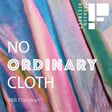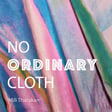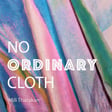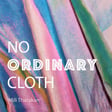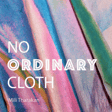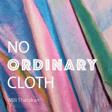
Ep 13. 3D Weaving Yarns into Garments and Zero Inventory Circular Fashion with Beth Esponnette
In this episode of the No Ordinary Cloth podcast, Beth Esponnette, the co-founder of Unspun, shares her groundbreaking innovation in 3D weaving technology that creates garments in a single, seamless piece, revolutionising fashion manufacturing and disrupting the current supply chain. Beth discusses her journey from an assistant professor to a pioneer and founder of Unspun, her challenges in scaling micro factories, and the leadership lessons she learned while captaining Cornell’s Nordic Ski team.
She emphasises the importance of transitioning from linear to circular life cycles to address sustainability, reduce overproduction, and the environmental impact of materials like polyester. Beth draws inspiration from influential thinkers and delves deep into the technical aspects, showcasing a visionary approach to rethinking the supply chain in the textile industry. Listen in to discover how creativity and cutting-edge technology can reshape fashion manufacturing for a more sustainable future.
Beth is fascinated by science and art, especially where they intersect: design. She earned her MFA in Design from Stanford University before serving as Assistant Professor of Product Design at the University of Oregon.
Beth has been recognised for her work by Vogue Business 100 Innovators, MIT Technology Review 35 Innovators Under 35, and Adweek Sustainability Stars. Unspun has been recognized by TIME with a Best Invention award twice.
Connect with Unspun
Unspun website I Shop for custom fit jeans I Instagram
Resources
Sapiens: A Brief History of Humankind, by Yuval Noah Harari
Connect with Mili Tharakan
mili@militharakan.com I LinkedIn I Instagram I Podcast survey link
Your support means the world to me! If you enjoyed this episode, consider buying me a coffee
Cover art: Photo by Siora, Photography on Unsplash
Music: Inspired Ambient, Orchestraman
